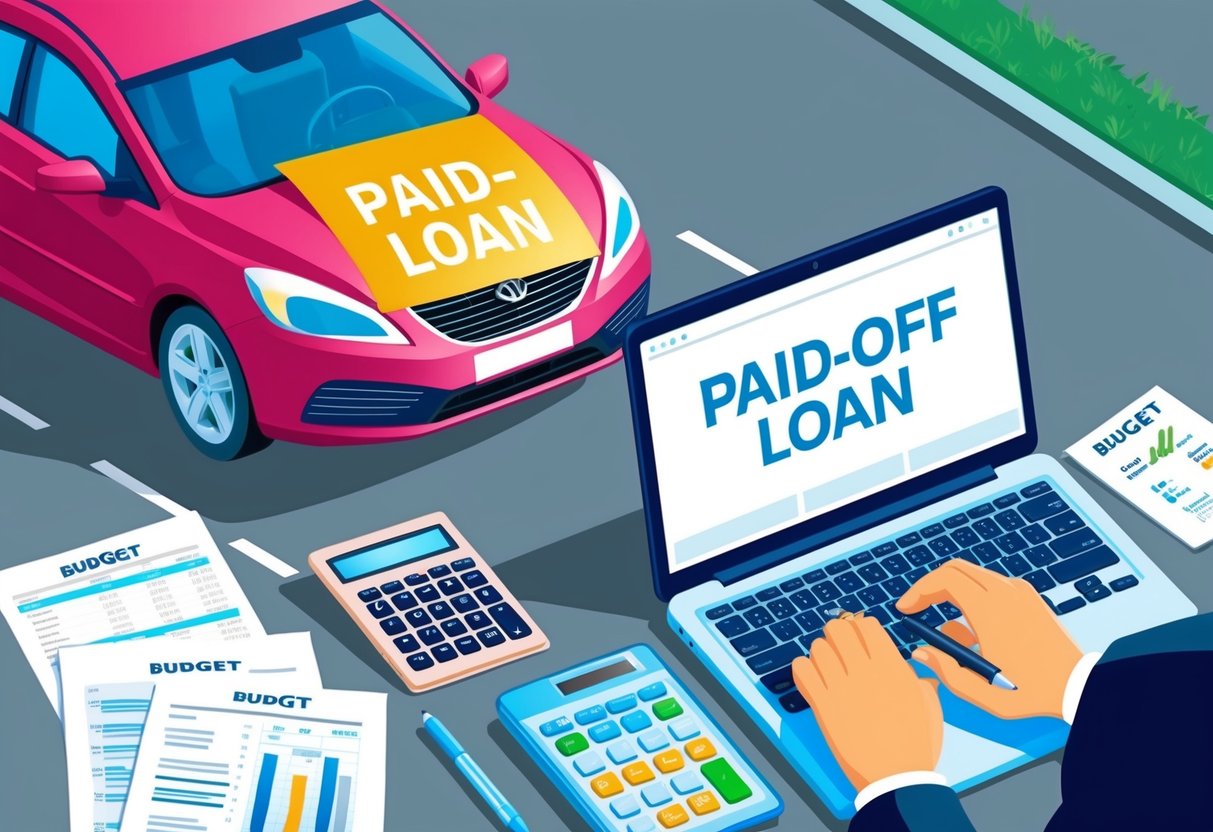
Updating Insurance and Registration Records

Once a car loan is paid off, the owner holds the title free and clear. Several post-payoff steps are necessary to ensure the DMV, insurance company, and registration records reflect the owner’s new status.
Providing Proof of Ownership to DMV
One of the first steps after clearing a car loan is securing the car title. The lender typically sends a lien release along with the physical title.
Presenting these documents to the local DMV or relevant state office is required to update the vehicle’s title and remove the lender as a lienholder. Failure to promptly update this information can lead to complications, especially if the owner plans to sell the vehicle or move to another state.
Most states require the car owner to submit both the lien release and the original title paperwork directly. Some DMVs may issue a new title listing only the individual as the registered owner.
Keeping documentation organized helps ensure the updated registration process is smooth. Carefully verify requirements on the DMV’s website to avoid multiple trips.
Notifying Your Insurance Provider
After loan payoff, it’s essential to notify the car insurance company. The lender previously acted as a lienholder and must now be removed from both the insurance policy and as a listed interested party.
Communicating with the insurer ensures that all documentation is current. Some insurance companies require a copy of the new title or a lien release letter as confirmation.
Owners should request written confirmation from the insurer that updates have been processed. Additionally, check the policy for any terms linked specifically to the previous loan, like required proof of insurance coverage levels.
Updating insurance records not only fulfills obligations but prevents confusion if future claims arise. Maintaining accurate information with insurers limits administrative delays and ensures compliance with state auto insurance laws.
Adjusting Your Coverage
Once lenders are no longer involved, owners have flexibility in adjusting coverage. Lenders often require comprehensive and collision policies, even if the vehicle’s value does not justify them.
After payoff, drivers may consider less expensive options if their needs have changed. Request quotes for different coverage levels and compare side-by-side.
Evaluate trade-offs of lowering coverage, such as dropping collision or comprehensive insurance if the car’s value is low or saving costs with a higher deductible. Consider the state’s minimum auto insurance requirements when making decisions.
Some drivers may find savings by switching providers or bundling auto with other insurance types. Those with significant assets, however, may still want robust coverage to protect against liability.
For specific details about changing insurance after payoff, refer to guides on changing car insurance companies.
Adjusting Your Budget Without Monthly Payments

Once a car loan is paid off, the budget previously allocated for monthly payments becomes available. How this money is redirected can make a significant impact on financial stability and future goals.
Reallocating Your Budget
With the monthly car payment gone, it’s important to review the budget to determine the best use for the extra funds. Consider the total sum that was being paid each month and track where that money goes using a spreadsheet or budgeting app.
Prioritizing needs over wants helps prevent the funds from being absorbed into unnecessary spending. Many find it beneficial to divert these funds to high-impact financial areas, such as an emergency fund or outstanding debts like credit cards or loans.
By reallocating the previous payment amount, the chance of building better financial security increases. Options may include increasing contributions to a retirement account, padding household savings, or addressing home improvements.
If the car previously required full coverage insurance due to lender requirements, now is also a good time to review auto insurance and see if a less expensive policy fits current needs. For specific insights on budget reallocations and insurance options, see steps suggested by Bob Tomes Ford.
Evaluating New Savings Goals
Setting new savings goals is crucial when freed from monthly car payments. Assessing current financial priorities—such as saving for retirement, planning for a vacation, or starting a college fund—can provide direction for the newly available funds.
Building an emergency fund is a common first step, especially if there is not already a cushion of three to six months’ expenses. Regular contributions to this fund offer a safety net for job loss or unexpected repairs.
Some choose to continue making “car payments” into a high-yield savings account, effectively preparing for future vehicle expenses or a down payment on a new car. This approach combines disciplined savings habits with financial preparedness.
For more ideas, see discussions in Reddit’s car-buying community.